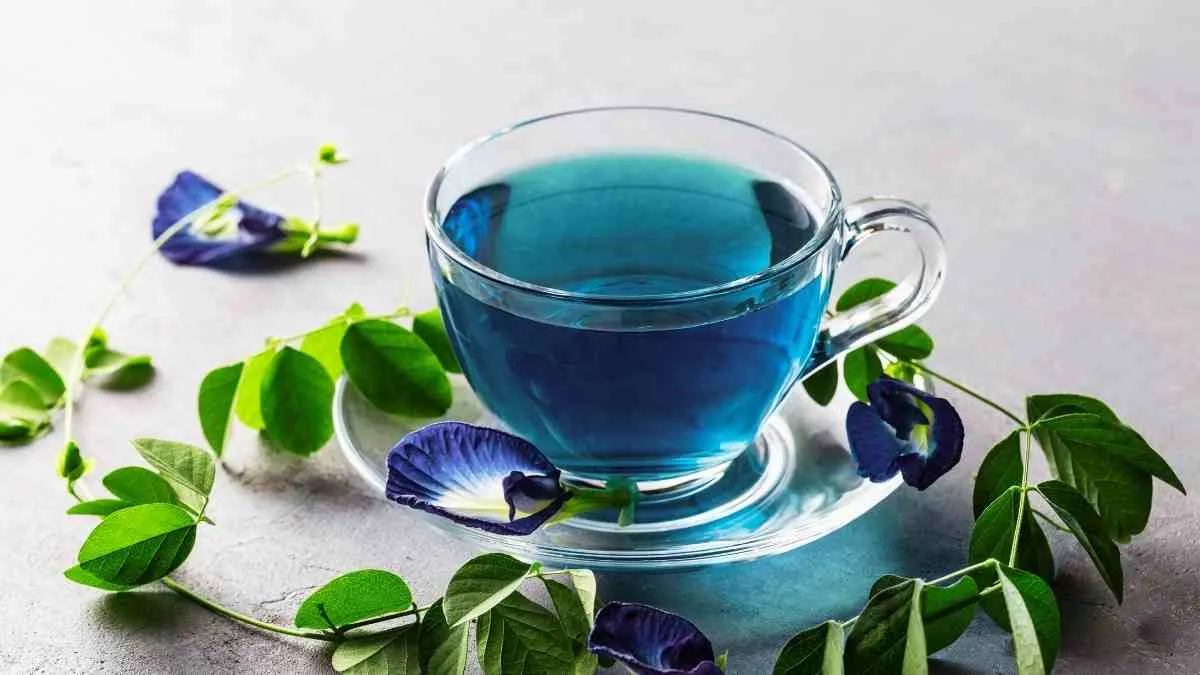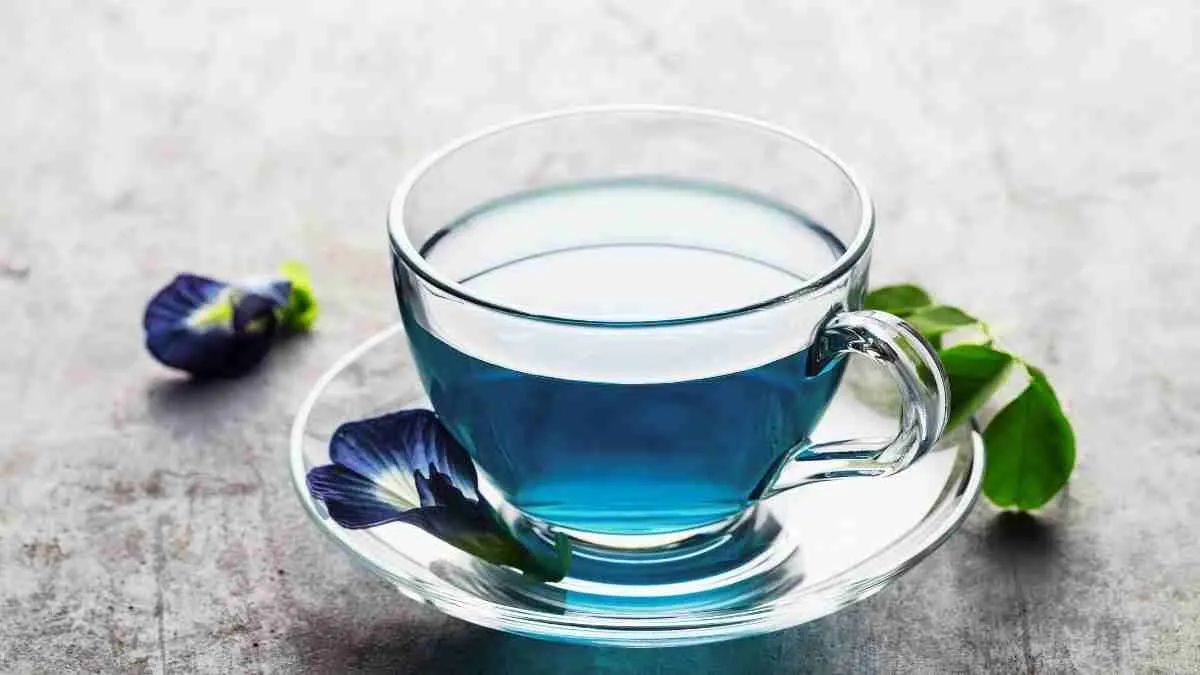Blue tea, often made from butterfly pea flowers (Clitoria ternatea), is a striking and vibrant tea known for its deep blue color.
It has gained popularity for its unique hue, mild flavor, and numerous health benefits. In this guide, we’ll cover how to make blue tea, how to enjoy it, and some creative variations to keep things exciting.
What is Blue Tea?
Blue tea is made from the dried petals of the butterfly pea flower, which is native to Southeast Asia. It has a mildly earthy, slightly floral taste, and the natural blue color is one of its most striking features. When you brew the tea, it releases an intense blue shade, but the color can change to purple or even pink when you add acidic ingredients like lemon.
Health Benefits:
-
Antioxidants: Rich in anthocyanins, which are powerful antioxidants that can help reduce oxidative stress.
-
Anti-inflammatory properties: It can help calm inflammation in the body.
-
Improved skin health: It is often touted for promoting healthy, glowing skin.
-
Brain function: Blue tea is believed to have cognitive benefits, improving memory and mental clarity.
How to Make Blue Tea:

Ingredients:
-
1 tablespoon dried butterfly pea flowers (available at specialty tea shops or online)
-
2 cups hot water (just below boiling, around 190°F or 90°C)
-
1-2 teaspoons honey or sweetener (optional, adjust to taste)
-
Lemon or lime juice (optional for color-changing effect)
-
Ice cubes (optional for iced tea)
Instructions:
-
Boil the Water:
-
Heat 2 cups of water to just below boiling (around 190°F or 90°C). If the water is too hot, it can make the tea taste bitter.
-
-
Steep the Flowers:
-
Add 1 tablespoon of dried butterfly pea flowers into the hot water. Let them steep for about 5-7 minutes. The water will gradually change color from clear to a vibrant blue as the petals release their natural pigments.
-
-
Sweeten the Tea (Optional):
-
Once the tea has steeped, remove the flowers and stir in honey or your preferred sweetener. You can also adjust the sweetness to taste.
-
-
Add Lemon (Optional for Color Change):
-
For a beautiful color transformation, add a squeeze of fresh lemon or lime juice to the tea. The acidity will change the color from blue to purple or pink, creating a stunning visual effect.
-
-
Serve:
-
Serve hot, or chill in the refrigerator to make iced blue tea. If making iced tea, pour the tea over ice cubes for a cool, refreshing drink.
-
-
Garnish (Optional):
-
Garnish with fresh mint leaves or a slice of lemon for a beautiful presentation and added flavor.
-
Creative Blue Tea Variations:
While blue tea on its own is a treat, you can easily mix it up with additional flavors to create unique beverages. Here are a few variations to try:
1. Blue Lemonade
-
Ingredients: Blue tea, fresh lemon juice, a touch of honey or agave syrup.
-
Instructions: Brew the blue tea and let it cool. Mix with fresh lemon juice, stir in honey or syrup, and serve over ice. The lemonade’s tartness will create a magical color shift when combined with the blue tea.
2. Blue Iced Tea
-
Ingredients: Blue tea, ice cubes, mint leaves.
-
Instructions: Brew the tea, let it cool, and pour over ice cubes. Add a few fresh mint leaves for a refreshing kick.
3. Blue Tea with Coconut Water
-
Ingredients: Blue tea, coconut water, a slice of lime.
-
Instructions: Mix chilled blue tea with coconut water for a hydrating and tropical drink. Add a slice of lime for an extra burst of freshness.
4. Blue Matcha Latte
-
Ingredients: Blue tea, matcha powder, milk (or dairy-free alternative), honey or sweetener.
-
Instructions: Brew the blue tea, then prepare a matcha latte by whisking matcha powder with milk and sweetener. Combine both drinks for a unique blue matcha latte, which offers a blend of earthy matcha flavor and floral blue tea.
5. Blue Tea with Fruit Infusions
-
Ingredients: Blue tea, berries (strawberries, raspberries, or blueberries), honey, or agave syrup.
-
Instructions: Brew the blue tea and let it cool. Muddle some fresh berries in the bottom of your glass, pour over the cooled tea, and stir in your sweetener. Garnish with extra berries.
Tips for Perfect Blue Tea:
-
Use Fresh, High-Quality Flowers: For the best flavor and color, use fresh or high-quality dried butterfly pea flowers. Fresh flowers can be harder to find, but high-quality dried flowers yield vibrant color and better flavor.
- Experiment with Sweeteners: While honey is a popular choice, try agave syrup, maple syrup, or stevia for different flavor profiles.
-
Chill Your Blue Tea: For iced blue tea, allow your tea to cool to room temperature or chill in the fridge before serving over ice.
-
Watch the Color Change: Adding lemon or lime juice will change the blue color to a beautiful purple or pink, making it a fun and visually appealing drink.
-
Customize the Strength: The longer you steep the butterfly pea flowers, the darker and more intense the color and flavor will be. Steep for less time if you prefer a lighter taste.
Recommended: Tea Leaves | Benefits, and How to Brew Them
FAQ:
1. Can I drink blue tea hot or cold?
-
Yes, blue tea is delicious both hot and cold. When served hot, it has a soothing, mild flavor, while chilled blue tea is incredibly refreshing, especially on a warm day.
2. Does blue tea have caffeine?
-
Butterfly pea flower tea is naturally caffeine-free, making it a perfect choice for those who want to enjoy a calming drink without the caffeine boost.
3. Why does blue tea change color when I add lemon?
-
The blue color of butterfly pea flowers is due to the presence of anthocyanins, which are sensitive to changes in pH. When you add acidic ingredients like lemon or lime, the pH of the tea shifts, causing the color to change from blue to purple or pink.
4. What does blue tea taste like?
-
Blue tea has a mild, earthy, and slightly floral taste. It’s not as strong or tannic as black tea, making it a subtle and refreshing choice.
5. Can I add milk to blue tea?
-
While blue tea is usually enjoyed as a clear, bright drink, you can add milk for a creamier, softer texture, especially in latte-style drinks. However, be mindful that milk may dull the vibrant color.

